THE INAUGURAL LONDON MARATHON 1981
Since the dawn of our industry, whether construction jobs, homebuilding projects, or special events, we strive to provide the best quality equipment and offer the best service possible for the customer.
Such was the case in the United Kingdom in 1981 for the highly anticipated Inaugural London Marathon. Co-founded by friends Chris Basher (1956 Gold Medalist in Melbourne Olympics in 3000-meter steeplechase) and John Disley (1952 Bronze Medalist in Helsinki Olympics also in 3000-meter steeplechase), a large European Marathon was their vision. Basher participated in the 1979 New York Marathon which had its beginnings in 1970. After completing this marathon – still the hottest on record at 80F / 27C on that October 21st day in New York – Basher was determined to work to establish a marathon of this same caliber in London.
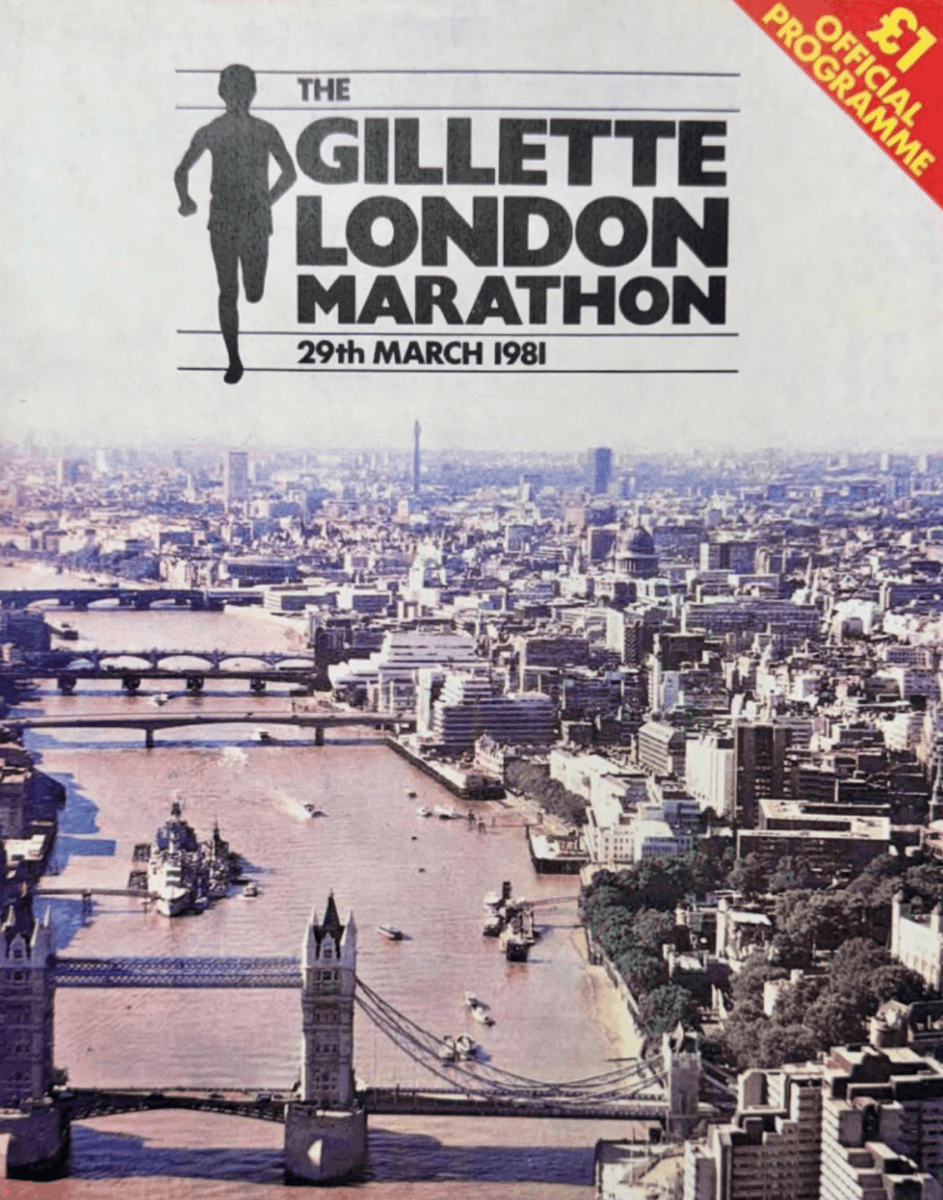
After two years of hard work securing sponsors, planning the 26-mile 385-yard course, and obtaining city approvals and support, Brasher and Disley saw their dream come true – the running of the Inaugural London Marathon!
The Daily Post (Liverpool, Merseyside, England) from March 31, 1981, reported on the Marathon as follows:
“The streets of London echoed the pounding of 6,700 pairs of feet yesterday in one of Britain’s most spectacular sporting extravaganzas …. 80% of them conquered the epic distance … and more than a million spectators braved the wet weather to line the route.”
With these large crowds and thousands of runners, what about portable sanitation? The Daily Telegraph (London) reported on March 30, 1981:
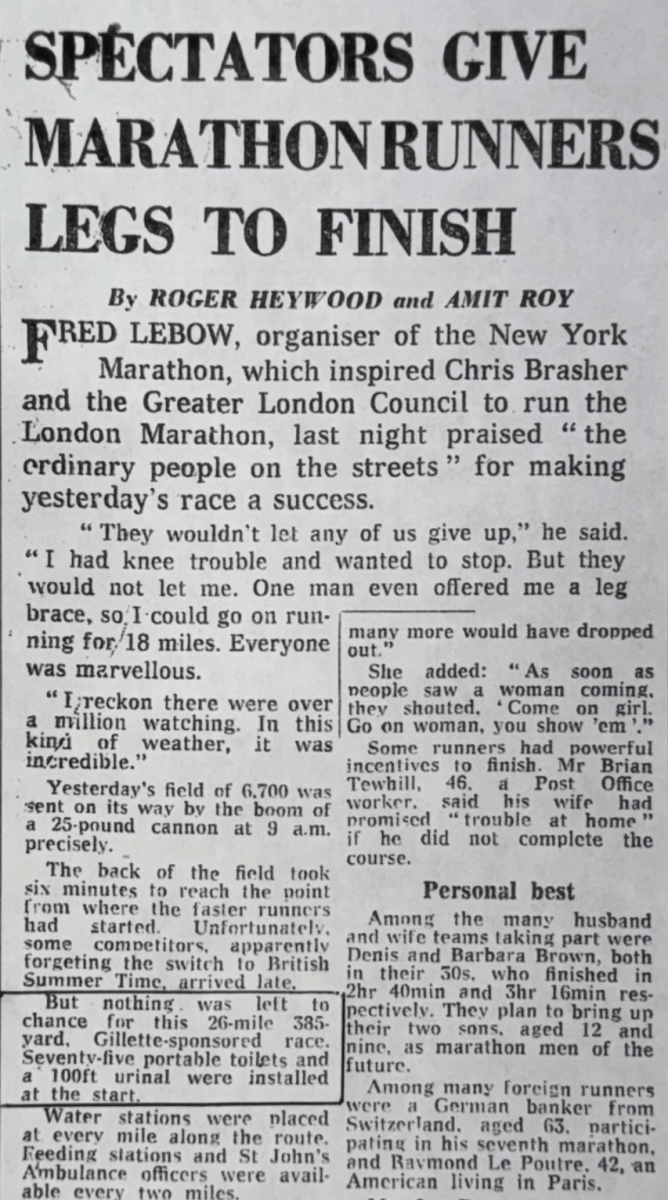
Quoting the highlighted paragraph near the bottom of column one above:
“But nothing was left to chance for this 26-mile 385-yard, Gillette-sponsored race. Seventy-five portable toilets and a 100 ft urinal were installed at the start.”
PORTABLE TOILETS IN USE AT THAT TIME
While the units used in the New York Marathon in 1981 were made of either fiberglass or plastic, very similar to those that we use today, units in the UK at that time were far from portable. Manufactured by the Portasilo division of the Shepherd Building Group, these units were actually small buildings or sheds with a toilet and a sink installed over a holding tank below. PortaKabin was the entity that made the Portaloo, which was a registered trademark of the company. Made of steel, these units had to be moved, transported and positioned by a “hiab” – a crane-operated vehicle - or a “lorrie” – a large motor vehicle.
The Portaloo 25 was the standard unit at that time.
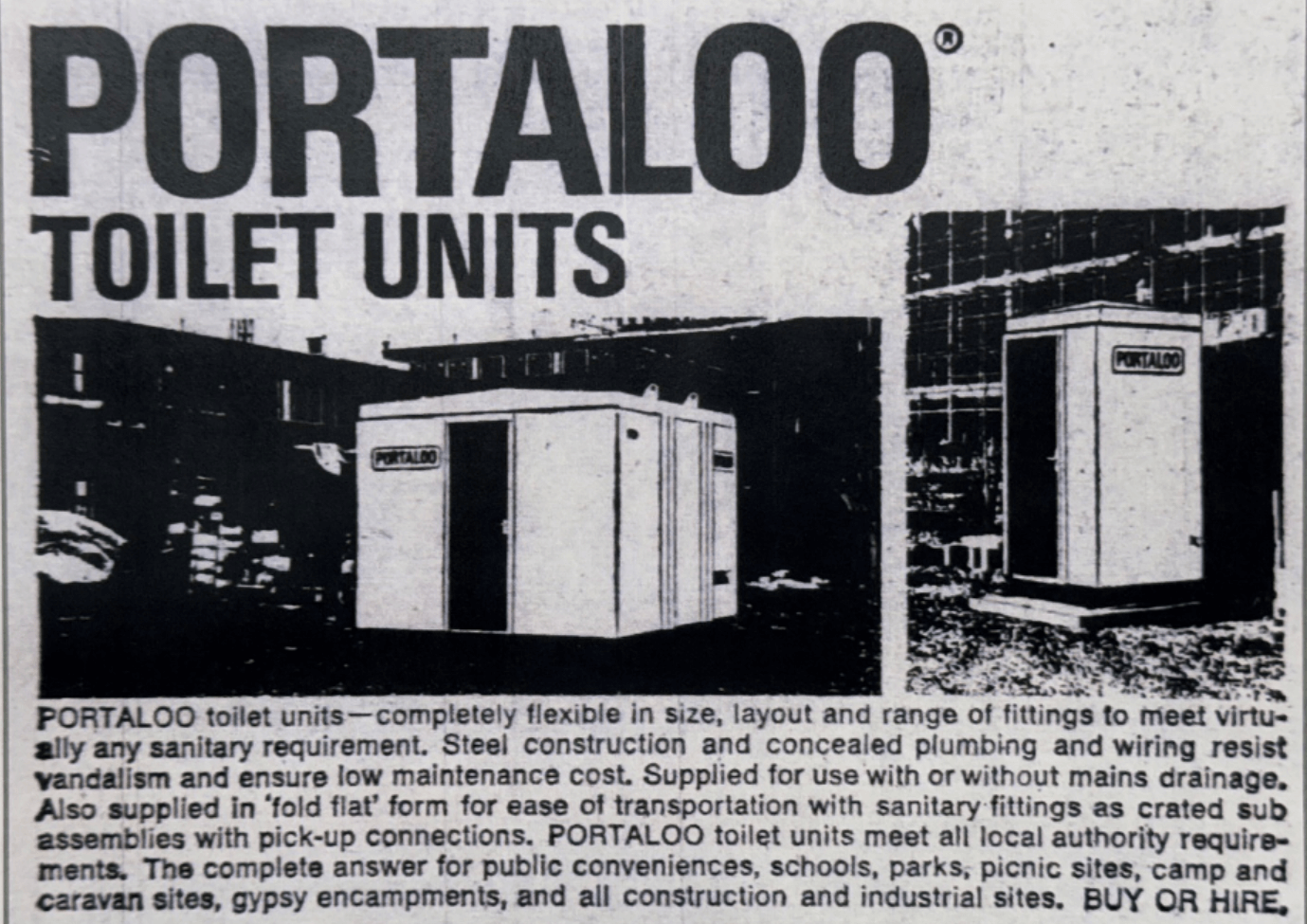
Longtime industry veteran in the UK for 34 years, former PSE General Secretary, and good friend, Martin Murdoch, shares a description and his thoughts of the Portaloo 25:
“The heavy steel unit included a porcelain pan and hand wash basin. The toilet was of a mechanical foot-operated recirculating flush style and was fitted with an electric light, if the site conditions had the required electrical support. The one major issue with the design was the recirculating holding tank. How was it to be serviced? Invariably it wasn’t and the toilet was found to be in a state of maluse and hence the concept went into a slow decline.”
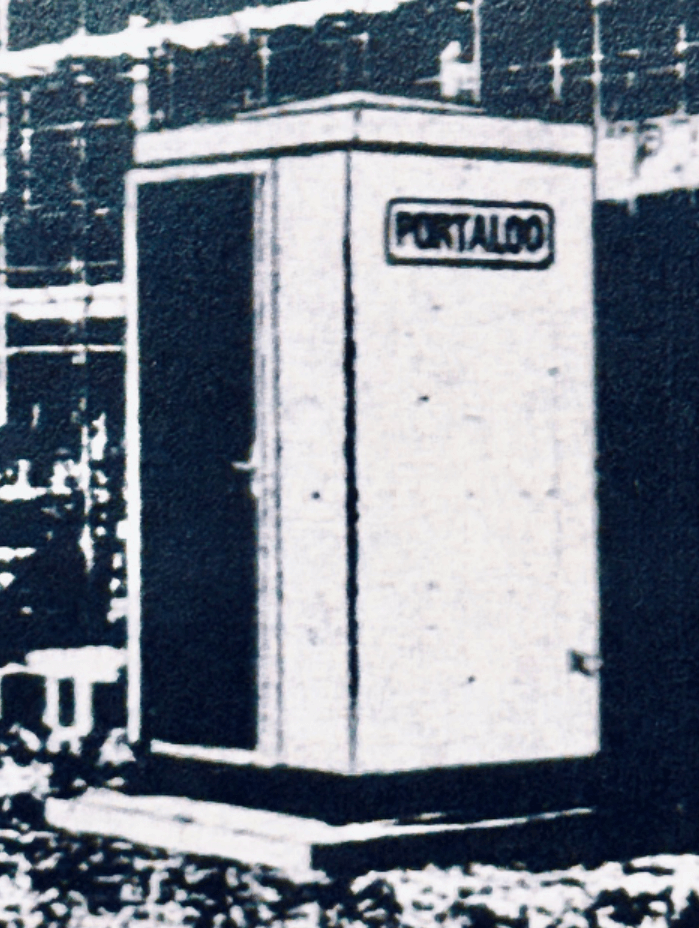
FOLLOW UP – 1982 LONDON MARATHON
How was the Marathon received the next year? The Fulham and Hammersmith Chronicle reported on May 7, 1982; the event was “the biggest ‘People’s Marathon’ in the world – 18,059 entries.” The “longest urinal in Europe – 100 feet” was present once again at the start with “nearly 300 toilets … at the start, finish, and along the route.” While the number of units had grown from 75 to 300, these Portaloos still had to be manipulated by small cranes.
PERSONAL REFLECTIONS ON THE LONDON MARATHON DURING THIS TIME
Paul Mitchell with Shorelink New Zealand worked in the UK from the 1980s through the year 2000 before transferring to New Zealand where he still works today. He shares some thoughts about the early years of this event:
“We transported units across a busy central road network from the John Anderson Company in Iver Bucks to Black Heath Common, the starting area of the London Marathon (roughly 15 miles but very heavy traffic). Each of these John Anderson cabins were over 20 feet long so with one loaded on the truck and one towed behind on a trailer, we negotiated London traffic with the truck and trailer being over 50 feet long. The event only allowed for a few days set up and breakdown so it was a constant back and forth. On collection, after being hammered by thousands of people, they smelt a bit ripe and we were not the most popular trucks to be stopped near in daily traffic jams!”
Paul shares some remarkable pictures of the units he delivered to the London Marathon during the 1985 to 1989 time period. The demand for these products was diminished as plastic units became standard in the UK.

Paul remembers delivering these John Anderson Company units around 1985. These units had wheels on them for better maneuverability due to their size and weight.
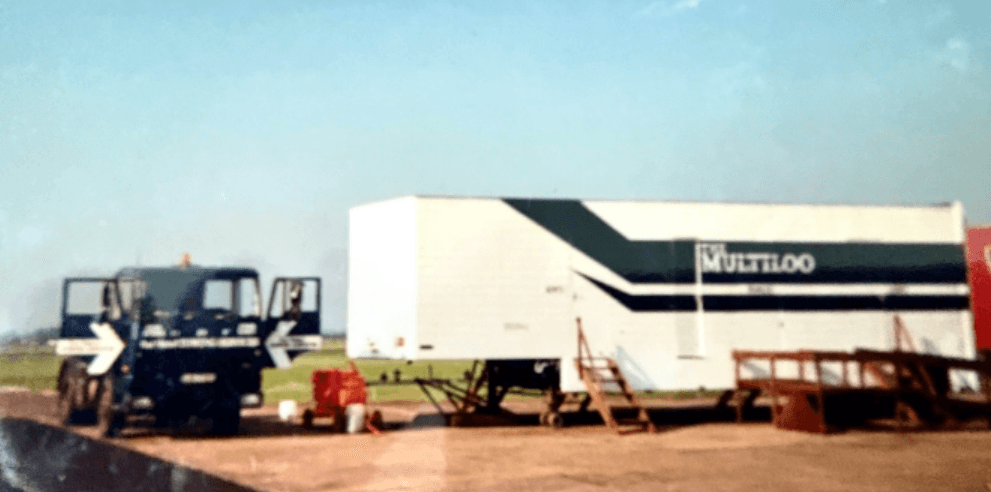
Paul worked with his father-in-law to construct the “MULTILOO” around 1987. This unit contained 18 urinals, 9 stalls, and a handicapped unit – all with recirculating flush.
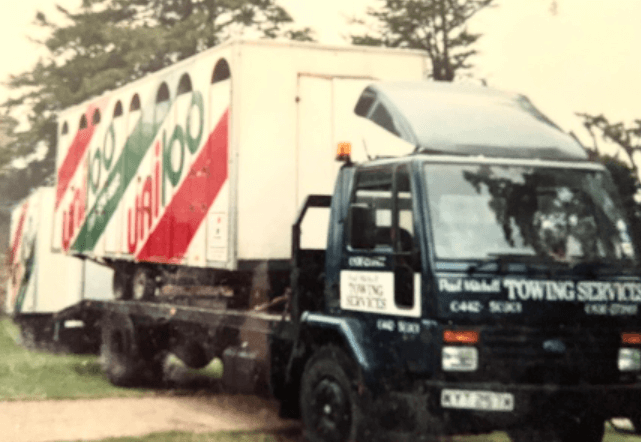
These distinct “Uniloo” units were built by Tim and Dave French at Pilot Hire.
WHEN DID MORE “PORTABLE” UNITS BECOME THE STANDARD IN THE UK?
Martin Murdoch states that Satellite Industries introduced their plastic unit in late 1986 or early 1987 in the Republic of Ireland to Tufloo (owned by Tom Costello) and then in England later that same year to Owen Pugh Ltd (since sold to Nixon Hire) and Rentokil in London, operating at that time as Serviceloo.
FINAL THOUGHTS
The 1981 London Marathon was a tremendous success and the portable restrooms in use at that time met the needs of the customers. As we have seen, this equipment is not what would be considered as “standard” in the US in the 1980s. It was, however, the equipment that the operators in the UK used at that time and is an excellent example of how our industry provides quality service with the equipment that they have. Technology will continue to improve while our commitment to quality customer service never changes.
For even more interesting facts on the history of our Industry and of our Association, click on the link below and order your History Book today. All proceeds benefit the PSAI Scholarship Program.
